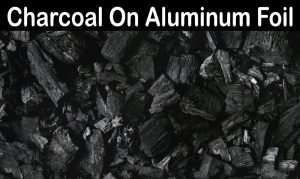The quest to melt queso fresco can be a delightful culinary challenge. Queso fresco, a staple in many Latin American dishes, is known for its crumbly texture and mild flavor. Unlike many of its cheesy counterparts, it doesn’t melt in the traditional sense when exposed to heat. But that doesn’t mean you can’t manipulate its consistency for various recipes.
Understanding the Composition of Queso Fresco and Its Melting Point
The unique behavior of queso fresco when heated is due to its composition. This cheese is made from fresh cow’s milk or a mix of cow and goat milk. Its moisture content and acid-coagulated properties prevent it from melting like oil-coagulated cheeses such as cheddar. Instead of turning gooey, it tends to soften, retaining its basic shape.
Exploring Different Types and Brands
There are variations of queso fresco, with some brands or types potentially having different melting properties. These variations can be due to differences in milk sources, production techniques, or additional ingredients. It’s worth sampling various options if you’re on a quest for a version that might have a more meltable texture.
Mixing Queso Fresco and Choosing Alternatives
Blending cheeses can offer a new dimension to dishes, both in terms of flavor and texture. When considering queso fresco, its crumbly nature might seem challenging to integrate, but with the right pairing, a harmonious combination can emerge.
- Pairing with Meltable Cheeses: Combining queso fresco with cheeses like Monterrey Jack, mozzarella, or even a mild cheddar can create a mix that possesses the flavors of queso fresco but benefits from the melting properties of the other cheeses. Such combinations work wonders in dishes like nachos, stuffed peppers, or layered casseroles.
- Choosing Alternatives with Similar Flavor Profiles: If you’re looking for a cheese that brings forward a similar freshness as queso fresco but with better melting properties, consider cheeses like queso blanco or Oaxaca cheese. The latter, especially, is known for its stringy melt and mild flavor, reminiscent of queso fresco but with a texture that’s more suitable for melting.
Applying Heat: Techniques and Temperatures
The method you choose to heat queso fresco can influence its texture. Direct heat, such as grilling or frying, can make it crispy or golden without making it runny. Indirect heat, like baking or steaming, softens the cheese, giving it a creamier consistency. Microwaving is another quick method, but it’s essential to do so in short intervals to prevent it from becoming rubbery.
Flavor Transformations and Culinary Applications
Queso fresco is renowned for its gentle tang and the refreshing taste of dairy. However, when subjected to heat, this cheese evolves, revealing a deeper and richer flavor profile.
Its already nuanced taste can be further amplified with the right pairings. Ingredients such as fresh herbs like cilantro and parsley, spicy chilies including jalapeños and serranos, and sweet fruits such as mango and pineapple, enhance the inherent flavors of queso fresco, especially when it’s heated. By thoughtfully integrating these elements into dishes, one can curate a culinary masterpiece that pays homage to the distinct essence of the cheese.
Moving beyond its roots in traditional Latin American cuisine, queso fresco’s unparalleled melting behavior opens doors to a world of gastronomic opportunities. Imagine its soft texture in a Mediterranean grilled cheese sandwich or as an innovative topping on an Indian curry, substituting the usual paneer. Truly, the adaptability of queso fresco in global recipes is only restrained by the boundaries of a chef’s imagination.
Queso Fresco Vs. Other Non-melting Cheeses
Queso fresco is not alone in its melting behavior. Other cheeses, like halloumi and paneer, also maintain their shape when heated. Understanding this category of cheeses can give you a broader palette to experiment with in the kitchen, allowing for a variety of textures and flavors in your dishes.
The Science Behind Cheese Melting
At a molecular level, the behavior of cheese when heated is influenced by its protein and fat content. The specific proteins present in cheese, primarily casein, form a structure that traps fat and moisture. When cheese is heated, these proteins begin to break down, allowing the fat to be released, leading to melting.
- Why Queso Fresco is Different: Queso fresco’s acid-coagulated formation means its protein structure is less dense compared to other cheeses. Thus, instead of melting and releasing fats, it retains its structure and simply softens.
- Comparing with Other Cheeses: Other cheeses, like Swiss or cheddar, are formed using rennet, leading to a more intricate protein network. This structure, when heated, allows the cheese to melt in the characteristic gooey manner we often associate with melted cheese.
Conclusion
While the endeavor to melt queso fresco might not lead to the gooey consistency found in other cheeses, it offers an opportunity to explore a world of culinary possibilities. By understanding its properties, experimenting with heating techniques, and considering flavor combinations, you can harness the full potential of queso fresco in your cooking. Remember, it’s not just about how to melt queso fresco, but how to celebrate its unique characteristics in the culinary landscape.


